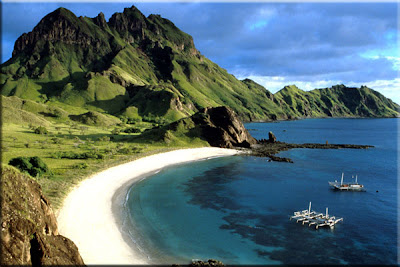 |
| Taken from Google Image Search |
Komodo National Park includes three major islands: Komodo, Rinca and Padar, as well as numerous smaller islands creating a total surface area (marine and land) of 1817km (proposed extensions would bring the total surface area up to 2,321km2). As well as being home to the Komodo dragon, the Park provides refuge for many other notable terrestrial species such as the orange-footed scrub fowl, an endemic rat, and the Timor deer. Moreover, the Park includes one of the richest marine environments including coral reefs, mangroves, seagrass beds, seamounts, and semi-enclosed bays. These habitats harbor more than 1,000 species of fish, some 260 species of reef-building coral, and 70 species of sponges. Dugong, sharks, manta rays, at least 14 species of whales, dolphins, and sea turtles also make Komodo National Park their home.
Komodo Island have a Conservation. The goals for Komodo National Park are to protect its biodiversity (particularly the Komodo dragon) and the breeding stocks of commercial fishes for replenishment of surrounding fishing grounds. The main challenge is to reduce both threats to the terrestrial and coastal marine resources and while avoiding conflicts between stakeholders. A comprehensive 25 year management plan completed in 2000 provides the basis for adaptive management to regulate all uses in the park and address threats while maximizing benefits for local communities in a sustainable way. To learn more about what steps are being taken to conserve Komodo National Park click on one of the following topics.
How to Get There
While most visitors enter Komodo National Park (KNP) through the gateway cities of Labuan Bajo in the west of Flores or Bima in eastern Sumbawa, the departure point for your trip is actually Denpasar, Bali. So if you have time while visiting Bali, you can spent time to visiting Komodo Island.
Here some view from Komodo Island, Indonesia
 |
| Taken from Google Image Search |
 |
| Taken from Google Image Search |
 |
| Taken from Google Image Search |
 |
| Taken from Google Image Search |
Thank you for visiting my Blog.

+in+Myanmar+Intro.jpg)


0 comments:
Post a Comment